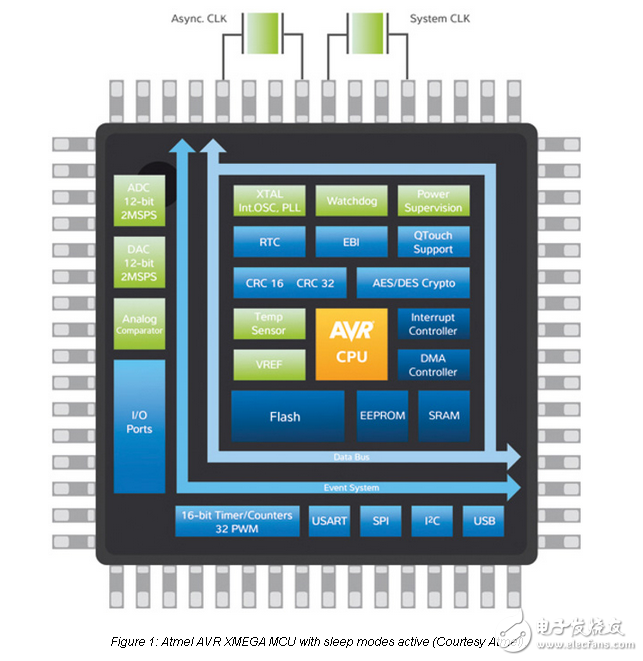
资料下载

了解嵌入式控制器的省电选项,以提高系统的功率效率
了解嵌入式控制器的省电选项,以提高系统的功率效率
所有大小的嵌入式控制器提供各种操作模式,以节省电力和/或节省电池的能量,同时系统运行和当它是空闲的。然而,可用模式的数量已经从两个或三个增加到多达六个。控制器设计者继续通过允许系统设计者选择性地关闭微控制器的不同部分和调整时钟速率来降低操作功率,以便在执行非时间关键任务时减慢控制器的速度。
如今,这个行业在许多不同的市场上使用微控制器——消费者、医疗、工业、安全、计算机等。许多这些系统是电池供电,因此功耗是一个关键的规格,设计师必须密切关注。即使系统是线运行的,功耗也可以是一个重要的规范,因为许多系统都是密封的外壳,并且在运行过程中产生的热量必须保持在最低限度,以防止这种系统过热。能源效率的运作也使得有可能消除风扇或其他方案旨在消除热量。

Tricks of the trade
Since the early days of microcontrollers, chip designers most often implemented microcontrollers with static logic rather than dynamic logic so that simple clock gating could be used to stop all processor activity and reduce the power consumed by the controller to near zero (often just the leakage current)。 Static logic allows all the gates or memories to retain their state so that the functions can pick up where they left off when the clock is switched back on. However, dynamic logic requires that the logic elements continually get some activity, much like DRAMs get refreshed, in order to maintain their logic state. Unfortunately that means dynamic logic continually consumes some power even when the processor is idling.
声明:本文内容及配图由入驻作者撰写或者入驻合作网站授权转载。文章观点仅代表作者本人,不代表电子发烧友网立场。文章及其配图仅供工程师学习之用,如有内容侵权或者其他违规问题,请联系本站处理。 举报投诉
- 相关下载
- 相关文章






